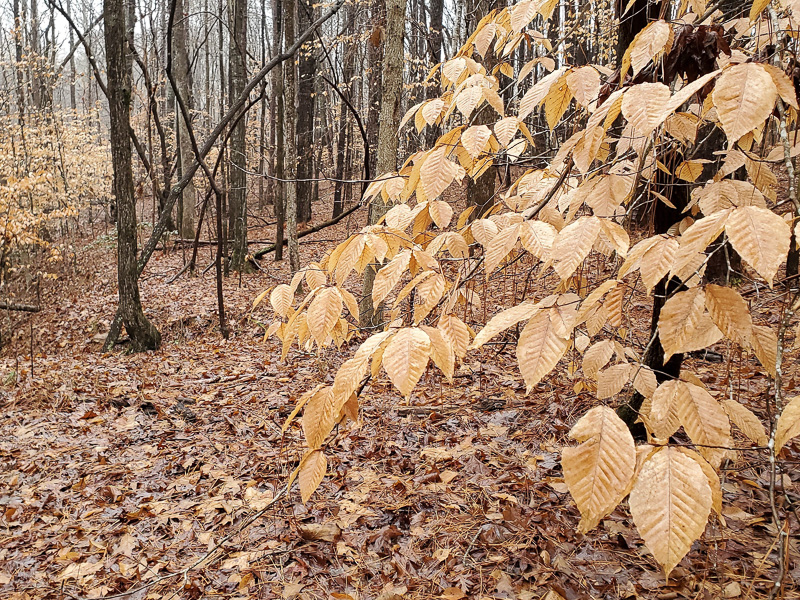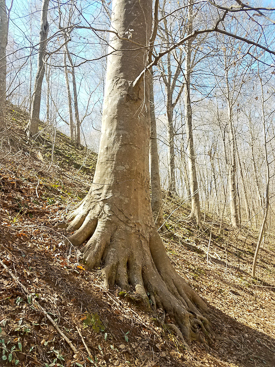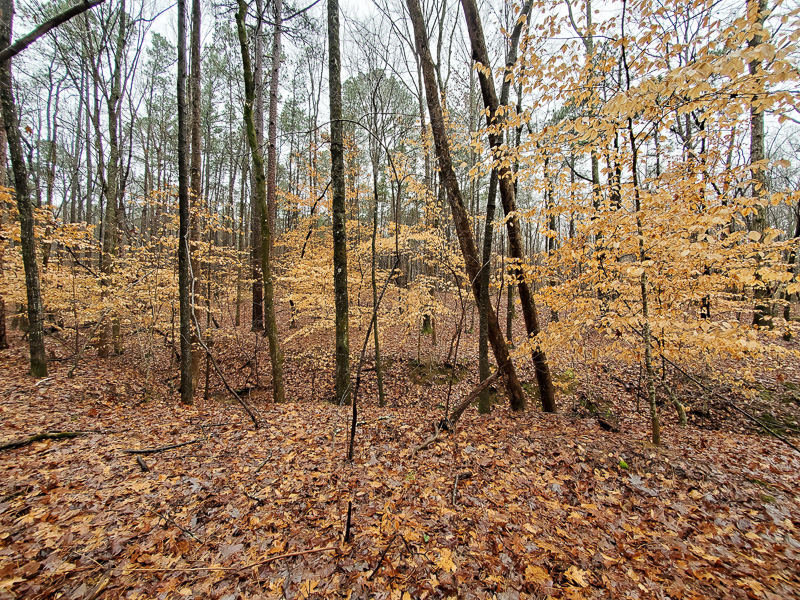Nature Now! Beech Life
For immediate release ‐ January 13, 2021
Nature Now
Contact: Jessica Wackes, 919.707.9850. Images available upon request
By Jerry Reynolds, Head of Outreach


Massive root base of American Beech tree.
The American Beech (Fagus grandifolia) is one of my favorite trees in the winter forest landscape. The American Beech is a magnificent tree year-round, but it really stands out from the crowd during the cold winter months. As you might guess by its name, the American Beech is native to much of eastern North America. Adult trees can be massive with trunks over three feet in diameter. The current National Champion tree in Virginia has a trunk diameter of almost six feet!
The smooth light gray bark of the American Beech makes them stand out from the other trees in the forest, which usually have darker and highly textured bark. Adult trees may look like they have been used for paintball target practice as their smooth trunks are frequently splotched with crustose lichens of varying shades of gray. Unfortunately, these smooth-barked trunks are also disfigured in parks as some people insist on memorializing themselves by carving initials, heart shapes and dates with their pocketknives. I really wish those people would leave the trees alone so that others may enjoy the natural beauty of this grand tree.
 Mosaic of Crustose Lichens on smooth bark of American Beech.
Mosaic of Crustose Lichens on smooth bark of American Beech.

American Beech well anchored on steep slope.
The American Beech is most often found in moist woodlands along streams and creeks. They take well to the slopes, anchored in place by their spreading root system. Others may be rooted closer to the water where they may eventually fall into the stream as it makes its natural lateral migration in the floodplain. They are slow-growing trees, reaching sexual maturity around 40 years of age and can live for 300-400 years.
You can impress your friends by identifying this tree in the woods along the interstate as you speed by in your car at 70 miles per hour. Unlike most of our other deciduous trees, young American Beech trees hold on tight to their leaves through most of winter. Most deciduous tree species develop an abscission layer at the base of the leaf stem in the fall. When the leaf shuts down from its photosynthetic work, this layer seals the leaf from the tree and facilitates its separation from the branch. Young American Beech trees do not develop this abscission layer thus the leaves remain attached for most of the winter. This is called marcescense and is a juvenile trait of American Beech trees. Mature trees usually do shed their leaves in the fall. The golden leaves still attached to the juvenile beeches in the forest understory stand out in the otherwise leafless winter forest landscape.

If you are able to take a closer look at the branches of an American Beech, you will see that the winter buds are slender and pointed unlike the short fat buds of most other trees. While checking out the winter buds, give a leaf a tug and see how well it is attached. The fruits are nuts in a soft spiny husk and are an important food for some native wildlife. Older trees can be hollow, and often serve as refuges for wildlife too.
Now would be a great time to get outside and see if you have any American Beech trees near you. I hope that you are now inspired to leave the warmth of your house and enjoy the beech life near you!

